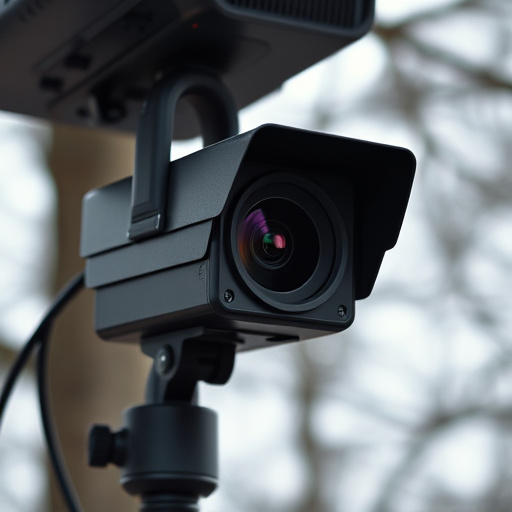Glint detection, an advanced image processing technique, combats hidden cameras in private settings like homes and babysitting scenarios by analyzing lighting variations and surface reflectivity. This method, integrated with remote monitoring trends, ensures privacy and security through real-time tracking of babysitters' movements and interactions, even in low-light conditions. Overcoming challenges involves sophisticated computer vision algorithms and deep learning models for accurate identification of artificial reflections from concealed cameras. Continuous technological advancements adapt surveillance systems, providing reliable protection and promoting peace of mind for parents.
In the realm of home security, especially when it comes to babysitter monitoring, concealed cameras play a pivotal role. This article delves into an innovative method: camera lens glint detection at night. We explore ‘Understanding Glint Detection’ and its application in ‘Babysitter Monitoring’. Subsequently, we navigate ‘Overcoming Challenges’ to ensure effective surveillance using these discreet devices. Discover how this technique enhances safety and peace of mind for parents considering Concealed Cameras for Babysitter Monitoring.
- Understanding Glint Detection: Unveiling the Technique
- Implementing Night-Time Glint Detection for Babysitter Monitoring
- Overcoming Challenges and Ensuring Effective Surveillance
Understanding Glint Detection: Unveiling the Technique
Glint detection is a sophisticated technique designed to identify and mitigate reflections from hidden cameras, particularly in the context of private spaces like homes or babysitter monitoring scenarios where concealed cameras for babysitter monitoring might be used. This method leverages advanced image processing algorithms to analyze subtle variations in lighting and surface reflectivity within a frame. By studying these patterns, the system can differentiate between genuine light sources and artificial ones caused by hidden cameras. The process involves several steps: first, it maps the intensity distribution across the image, then employs edge detection algorithms to identify sudden changes in brightness, and finally applies machine learning models to classify these anomalies as potential glints from hidden cameras.
This technique is crucial for maintaining privacy and security, especially with the rise of remote monitoring solutions. By employing glint detection, users can rest assured that their spaces are free from unwanted surveillance. It empowers individuals to protect their homes and personal lives in an era where technology offers both convenience and potential privacy breaches.
Implementing Night-Time Glint Detection for Babysitter Monitoring
Implementing Night-Time Glint Detection for Babysitter Monitoring involves leveraging advanced camera lens technology to enhance security in homes where children are being cared for after dark. By integrating concealed cameras with sophisticated glint detection algorithms, parents can rest assured that every corner of their home is monitored, even in low-light conditions. This method allows for real-time tracking of the babysitter’s movements and interactions with the children, ensuring a safe environment throughout the night.
Glint detection technology works by analyzing subtle light reflections off surfaces, such as eyes or jewelry, to distinguish human figures from ambient light sources. This is particularly useful in nocturnal settings where natural light is scarce. Concealed cameras equipped with this feature can non-intrusively capture footage while minimizing interference from external lights, providing clear and detailed visuals of the babysitter’s activities. Such innovative solutions empower parents to maintain a close watch on their loved ones’ well-being, promoting peace of mind and enhanced safety measures.
Overcoming Challenges and Ensuring Effective Surveillance
Overcoming Challenges in Glint Detection
While implementing camera lens glint detection, especially in low-light conditions like nighttime surveillance, presents unique challenges. The subtle reflections from concealed cameras, often aimed at monitoring babysitters or vulnerable individuals, can be difficult to identify. However, advancements in computer vision and image processing techniques offer effective solutions. These methods employ sophisticated algorithms to analyze video feeds, discerning the faint glints from natural light sources and distinguishing them from artificial reflections.
By leveraging deep learning models and edge computing, it becomes possible to process vast amounts of data in real-time, ensuring prompt detection without sacrificing accuracy. This is particularly crucial when dealing with hidden cameras, as immediate action can prevent potential privacy breaches or criminal activities. With continuous improvements in technology, surveillance systems can adapt to various environments, providing reliable protection through effective glint detection.
The method of camera lens glint detection, especially during nighttime, offers a discrete yet powerful tool for babysitter monitoring using concealed cameras. By implementing this innovative technique, parents can gain valuable insights into their child’s safety and well-being without compromising privacy. While challenges exist, such as lighting conditions and false positives, continuous advancements in technology and thoughtful placement of cameras can significantly enhance surveillance effectiveness. Concealed cameras for babysitter monitoring, armed with glint detection capabilities, represent a game-changer in ensuring peace of mind for busy parents.
